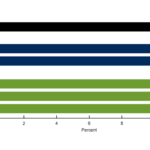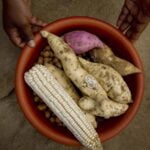Food insecurity continues to trend downward from its high point of 14.9 percent of U.S. households in 2011.
In 2015, 12.7 percent (15.8 million households) were food insecure, according to a U.S. Department of Agriculture report.
Of this total, 7.7 percent of households had low food security and 5 percent qualified as having very low food security.
The primary difference between a household with low food security and one with very low food insecurity is reduction in food intake.
“[T]he defining characteristic of ‘very low food security,'” the report explained, “is that, at times during the year, the food intake of household members was reduced and their normal eating patterns were disrupted because the household lacked money and other resources for food.”
Trouble acquiring food, reduction in diet quality and concerns about running out of food are issued faced by households in both categories.
Even with the 2.2 percent decrease since 2007, food insecurity remains above the prerecession rate of 11.1 percent.
Children faced food insecurity in 16.6 percent of U.S. households with children – only adults were food insecure in 8.8 percent of these, while both children and adults were food insecure in 7.8 percent.
“For households with incomes near or below the federal poverty line, households with children headed by single women or single men, women and men living alone, and black- and Hispanic-headed households, the rates of food insecurity were substantially higher than the national average,” the report noted.
The full report is available here. An executive summary is available here.




